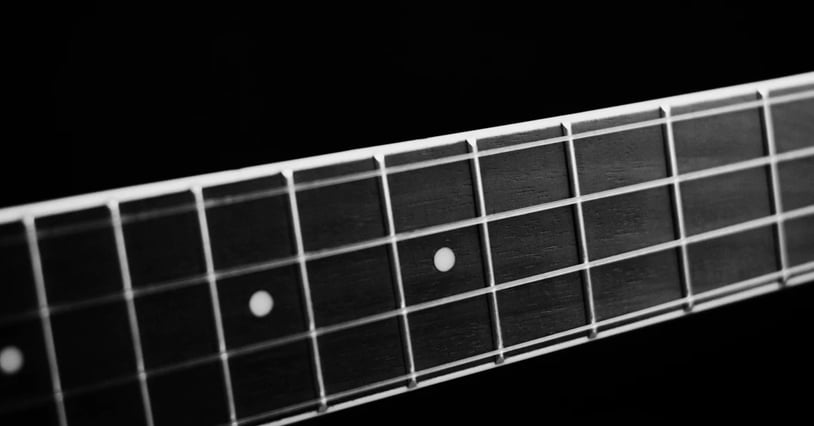
We all know the adage of “maintenance is better than repair.” In some cases, without proper maintenance, repairs are impossible. When it comes to the adequate maintenance of your guitar, it is essential that you oil your guitar fretboard.
When it comes to keeping your guitar in a playable condition, fretboard maintenance should be at the top of your mind. While you can replace most parts on your guitar without much issue, replacing a fretboard can be an expensive endeavour. In most cases, you will need to replace the whole neck, which could change the way your guitar feels in your hand.
In this guide, we will cover:
- Regular maintenance
- Why oil your fretboard
- Types of fretboard
- How often should you oil your fretboard
- How to oil your fretboard
Regular Maintenance
Ask most guitar techs what the worst part of the job is, and they will tell you it’s how gross some guitar fretboards become. As you play, your hands start to sweat, and you shed dead skin. Where does all this skin and sweat end up?

A lot of it ends up getting caked to the strings and the fretboard. Look at a guitar that doesn’t get cleaned often, and you will see the residue that your sweat and skin leaves behind. Kinda gross right?
The way to prevent this buildup, or at the very least significantly reduce it, is to wipe down your fretboard with a soft microfibre cloth after every practice session. As a bonus, by wiping down your fretboard, you will also increase the lifespan of your strings.
Why oil your fretboard
As unvarnished wood ages, it tends to dry out. If the wood on your fretboard drys out too much, your fretboard will crack, wear out, and in extreme cases, your frets might not sit as well in the neck.
By using a natural oil like Dunlop’s Lemon Oil or Fender Custom Shops Fingerboard Remedy, you can replace the moisture that your fretboard is naturally losing. It is essential that you use a product designed specifically for a guitar; furniture polish, for example, will do a poor job of moisturising your guitar. And some oils might have an adverse reaction with the metal on your strings, and reduce their lifespan.
Types of Fretboard
The three most common types of guitar fretboard are made out of maple, rosewood, and ebony, respectively. While there are guitars out there that might use a different wood, the same basic rules for oiling will apply.
Maple Fretboard

Rosewood Fretboard

Ebony Fretboard

There are two primary finishes that a guitar fretboard will usually come in; varnished and unvarnished. Most maple fretboards will be varnished, whereas rosewood and ebony are typically raw, or unvarnished, wood. If your fretboard is varnished, then good news – you never need to worry about oiling your fretboard. Firstly, because the varnish will prevent the wood from losing moisture, and secondly, because the oil cannot penetrate the varnish, so oiling a varnished neck is nothing more than a waste of oil.
If on the other hand, your fretboard is unvarnished, you will need to oil your fretboard. If you’re not sure if your fretboard has been varnished or not, hold it up to the light. Is it shiny? If yes, your fretboard is varnished, if no, then it is most probably unvarnished.
How often should you oil your fretboard
An oversaturated fretboard could, in extreme cases, be as damaging to your guitar as a dry one. It is therefore vital to remember that you should practice moderation when oiling your fretboard.
Most commercial guitar manufactures suggest that you oil your fretboard once every six months. There are people out there who tend to oil their fretboard every time they change their strings; not only is this a waste of oil, but it can also lead to damaging your guitar. If you fall into this category, consider giving your guitar a few months before oiling it again.
How to oil your fretboard
Less is more when it comes to oiling. You want to use enough oil to coat the fretboard, but not so much oil that there are spots where it pools up. Certain brands nowadays have sponge applicators that can help you from over oiling. If your oil does not have an applicator, you can wet the corner of a rag and use that instead.
Use enough oil so that you can cover the fretboard, then using a dry rag (or the dry corner of your oil rag), rub the oil into the wood. Once done, wait a few seconds and tap the fretboard with the length of your finger. Doing so will bring any excess moisture to the surface of the guitar, which you can then wipe off with your rag.
Conclusion
To keep your guitar in excellent condition for the rest of its life, remember to wipe down your neck and fretboard after every session, and remember to oil your fretboard (if it is unvarnished) every six months.








